#manifesto 1988
Explore tagged Tumblr posts
Text



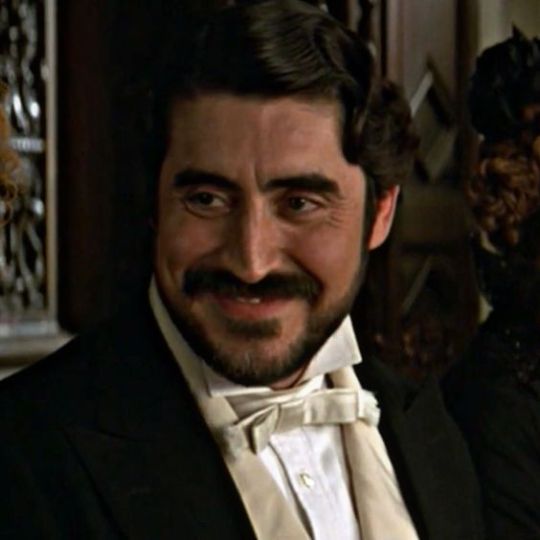


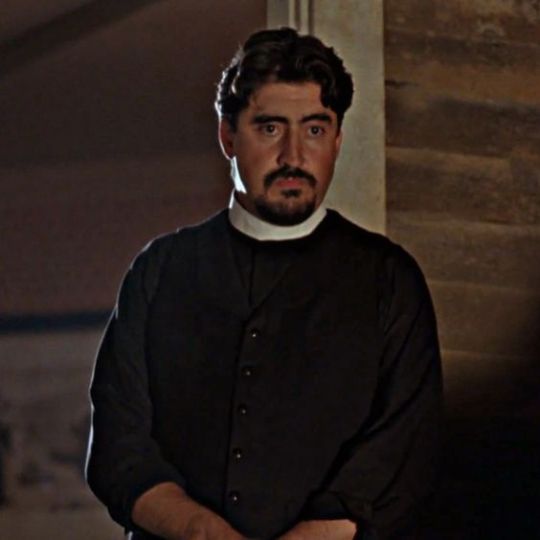
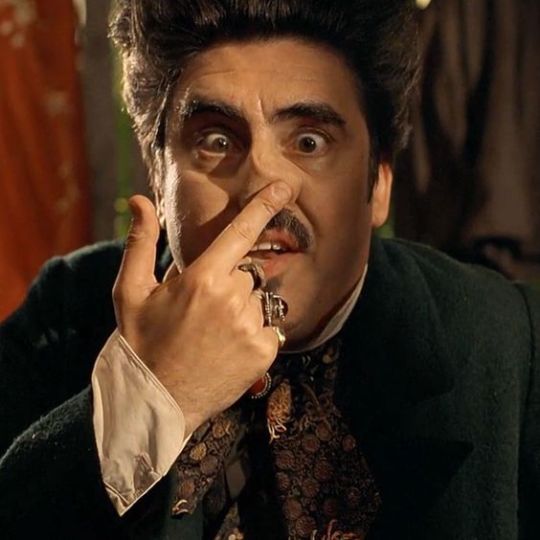




05/24/2024
Happy 71st Birthday to Alfred Molina!
Here's a small collection of photos of him that I quite like :3
#alfred molina#doc ock#manifesto 1988#white fang 2#el cid#the perez family#anna karenina#older men my beloved
96 notes
·
View notes
Text
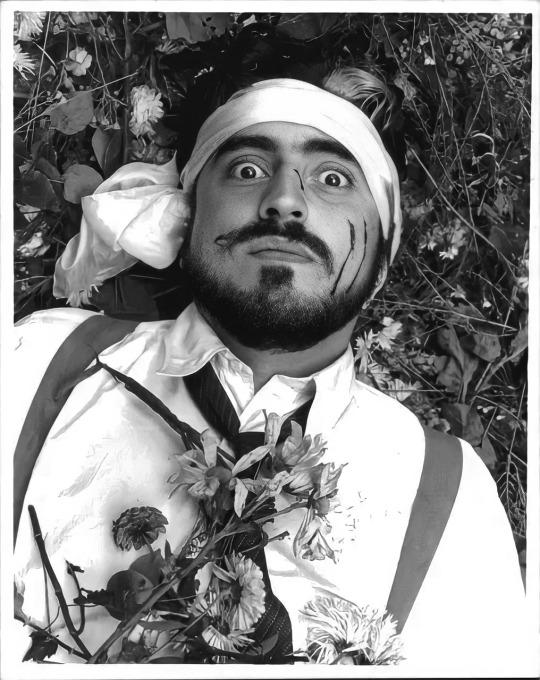
Another coloring picture for my friend @illiana-mystery ... 😉
#alfred molina#eye candy#he looks like a snack#Manifesto 1988#no idea what the movie was actually about
36 notes
·
View notes
Text



An article from 1988 about Romantia. Miss Lucinda Tyrrell was probably also Miss Priscilla Langridge, as the woman who also went by Miss Martindale seemed to go by Clare Tyrrell or Catherine Tyrrell (or some variation on those names). This has been posted before, but I saw it referenced in an old, archived, post from the Madrian blog here. It included this comment: "My illustration was published in The Spectator on 24th December 1988 for an article A Romantic Manifesto by Miss Lucinda Tyrrell" This is just interesting because it appears to imply that the authoress of the blog, who seemed to have a history with the girls of St. Brides, was the one who did the illustration for this particular piece.
#romantia#romantic manifesto#miss lucinda tyrrell#clare#miss tyrrell#miss claire tyrrell#1988#the spectator
1 note
·
View note
Note
*jingles key* oooo you wanna tell me about your centrist headcanons oooo *jingles more keys* maybe even your moderates too
chat i have been hypnotized
Ansyn:
qui does graffiti, and sometimes does commissions for small businesses (im not talking about walmart /ref)
while qui loves cats, ancap is allergic so qui can't have one in the centricide house. qui instead had a tamagotchi
quir room is a constant mess, except for the bed, which is made every morning for whatever reason
autism and ADHD, unsurprisingly. can you really look at quem and not think that quis a little Yippeeeeeee
also dyslexic asf
Commie:
he wears round reading glasses, and they make him look like a nerd (affectionate)
while he'd never admit it, he quite likes starbucks
demisexual king
his room is neatly cleaned, but somehow, something is always broken. be it a chair, a lightbulb, something is constantly on disrepair
autistic. duh
his favorite book is actually not the communist manifesto, it's just the one he has the most interlingual copies of. his favorite is state and revolution
he plays the violin on occasion, but he doesn't know many songs so he just makes them up as he goes
he has an old map of the world in his room dating to 1988, for the sole reason of pretending the ussr is still a thing. germany not being united yet is a bonus to him
Identitarian:
nothing in his room has ever seen sunlight for more than 15 minutes
actually really good at COD. also a really sore loser. he blames the latter on his roommates
he likes playing dnd for self hatred reasons because he gets to play a character that he finds ""pure"" (almost threw up a bit in my mouth writing that)
mommy issues
his room is very clean, but he fucking REFUSES to clean out his trashcan until ancap yells at him to
obviously gay in denial, i mean have you looked at him
Ancap:
the one i think the least of, probably. that's not saying i think of him little because i rotate the extremists like in the Micheal Wave on every occasion
huge swiftie, but if anyone ever pointed out out he'd fucking kill himself
likes to taunt commie whenever his stocks are up. notably shuts up when they're down
invested in ftx and lost a LOT. well, not a lot comparing to his overall wealth, but well over 500 000$ in that account alone
unsurprisingly, packing heat
Centrists:
dead
Moderate Lee:
babygirl
#blue gives a clue#centricide#jreg#jreg identitarian#centricide blueman#centricide commie#centricide ancap#centricide ancom
26 notes
·
View notes
Text

Yoshitaka Amano: Rampo Edogawa, 'The Golden Panther' (1988)
Illustration inspired by Edogawa’s creative manifesto: ‘The present is a dream, the dreams of the night are the reality’.
Amano freely transcribed and interpreted the essence of Edogawa’s work.
#yoshitaka amano#yoshitaka amano archive#rampo edogawa#the golden panther#1988#fantasy#ukiyo e#nouveau#sumi e#illustrations#japan
192 notes
·
View notes
Text

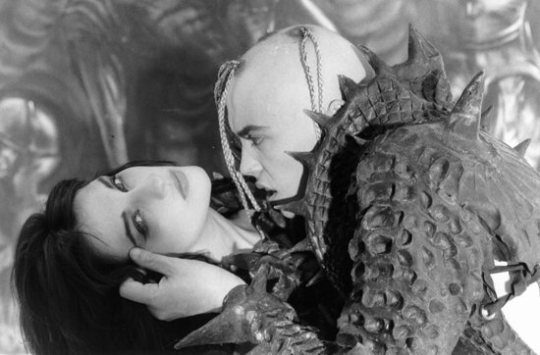

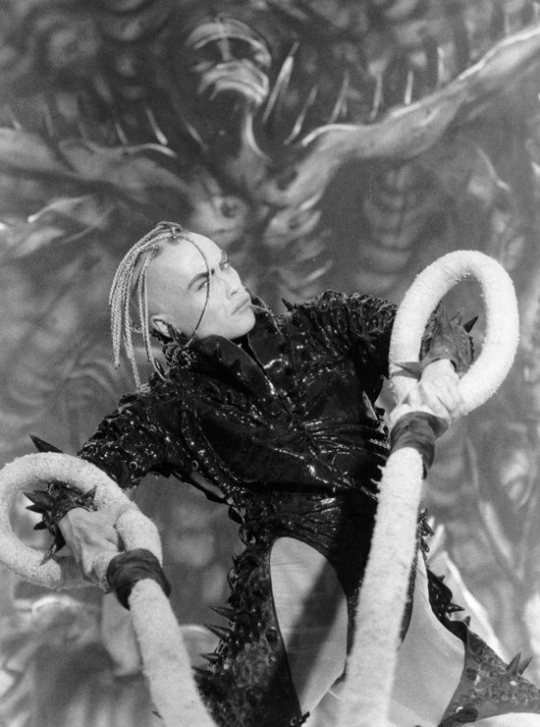

Meat Beat Manifesto
It was Craig's initial work as concept designer for Meat Beat Manifesto that prompted him to develop the qualities of his latex costumes into a commercial range of products.
Meat Beat are sighted to be one of the most influencial bands in the music scene to date.
Their ground breaking music teamed with the energetic choreography and the visually arresting stage and costume set proved to be outstanding.
A version of the Meat Beat Classic,' Babylon', is now residing on the new Prodigy Release.
Meat Beat was formed in 1988 and dis-banded in 1991.
The original line-up did well over 700 dates worldwide. There stage and live performances were radical, their music at the cutting edge. Meat Beat comprised of Jack Dangers, Writer and performer Piranna Jones, (AKA Marcus Adams), concept coreographer/performer Craig Morrison concept designer.
It was Craig's initial work with Meat Beat Manifesto that led to the product range of today.
'The Musician's musician' - NME 1990.
107 notes
·
View notes
Text

“On June 3, 1968, Solanas went to The Factory, shot Warhol and art critic Mario Amaya, and attempted to shoot Warhol’s manager Fred Hughes. She then turned herself in to the police. Solanas was charged with attempted murder, assault and illegal possession of a firearm. She was diagnosed with paranoid schizophrenia and pleaded guilty to ‘reckless assault with intent to harm,’ serving a three-year prison sentence, including treatment in a psychiatric hospital. After her release, she continued to promote the SCUM Manifesto. She died in 1988 of pneumonia in San Francisco.” (Wikipedia)
12 notes
·
View notes
Text
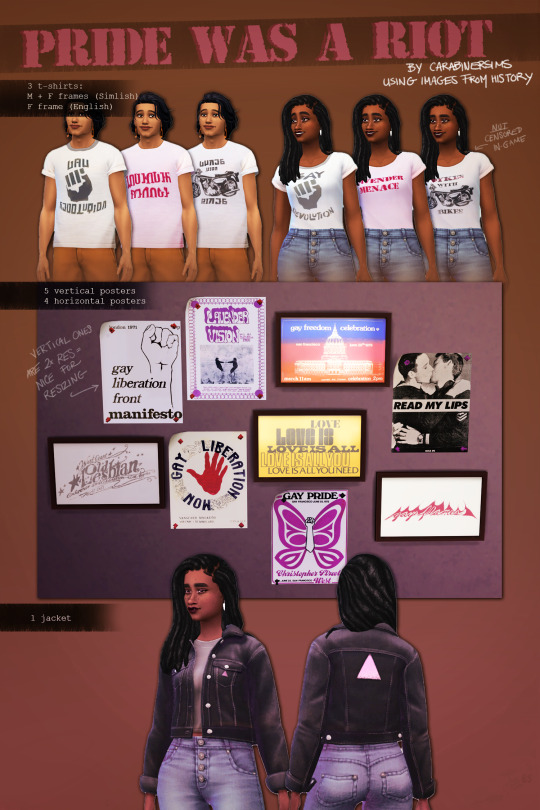
PRIDE WAS A RIOT: A new summer Pride collection featuring shirts, a jacket, and posters. Everything uses real images taken from protest posters, shirts, and zines from the 1970s-80s.
Download on SFS: Link
More info and sources under the cut!
Sources:
Horizontal posters
1. West Coast Old Lesbian Conference, 1987 https://airtable.com/shrfogVDPf63x1UD5/tblJA6Auy6la4odYo/viwWR4JplyByLUy11/recBwTRekYRAGEp5A via https://lesbianherstoryarchives.org/digital-resources/
2. Gay Freedom Celebration, 1978 https://www.glbthistory.org/poster-collection
3. Love is all you need by Homophile Coordinating Council of Boston, 1970 https://repository.library.northeastern.edu/files/neu:cj82ps65m 4. Gay flames zine cover, 1970 - https://queer.archive.work/library/download/gayflames1/gayflames1.pdf via https://queer.archive.work/library/download/index.html
Vertical posters
1. Gay liberation front manifesto, 1971 https://www.bl.uk/collection-items/gay-liberation-front-manifesto
2. Gay Liberation Now, 1970 https://www.digitaltransgenderarchive.net/files/6395w709f
3. Lavender Vision zine cover, 1970 https://queer.archive.work/library/download/index.html
4. Gay Pride poster - Christopher Street West, 1972 https://www.glbthistory.org/labor-of-love
5. READ MY LIPS Gran Fury poster, 1988 https://www.nypl.org/events/exhibitions/galleries/seen-assertion/item/10947
Shirts:
1. Gay Revolution, 1971 https://www.buzzfeednews.com/amphtml/gabrielsanchez/these-pictures-capture-the-energy-and-excitement-of-pride?ssp_iabi=1683563739154
2. Lavender Menace, 1970 https://www.nbcnews.com/feature/nbc-out/lgbtq-history-month-road-america-s-first-gay-pride-march-n917096 3. D**** on Bikes, early 1980s https://airtable.com/shrfogVDPf63x1UD5/tblJA6Auy6la4odYo/viwWR4JplyByLUy11/recpOEoTtTQ7ym8J2 via https://lesbianherstoryarchives.org/digital-resources/ Jacket: Inspired by history like this: https://time.com/5295476/gay-pride-pink-triangle-history/
96 notes
·
View notes
Text
Indigenous groups go after Lula coalition amid veto vote

With Congress set to analyze a presidential veto of a landmark indigenous land bill this week, Brazil’s Indigenous People Articulation (Apib) has launched a manifesto decrying the “anti-indigenous” sectors of the current governing coalition, affirming that traditional communities’ rights are “non-negotiable.”
In September, pro-agro sectors of Congress pushed through a bill establishing the so-called “time-frame argument” for indigenous land claims in Brazil. Said argument stipulates that traditional communities would only be able to demand ownership of territory if they could prove that they effectively inhabited it on October 5, 1988 — the day Brazil’s current Constitution was enacted.
The approval was in direct response to a Supreme Court decision that ruled the time-frame argument as unconstitutional. President Luiz Inácio Lula da Silva vetoed most of the bill in October, and Congress is set to ratify or overrule those vetoes this week.
While Apib hails Lula’s election last year as a “collective achievement,” it complains that the electoral context forced him to form a “broad ideological alliance, encompassing conservative and anti-indigenous economic and political sectors.”
Continue reading.
#brazil#brazilian politics#politics#environmental justice#indigenous rights#mod nise da silveira#image description in alt
31 notes
·
View notes
Video
youtube
Meat Beat Manifesto – Strap Down 1988 [Single]
6 notes
·
View notes
Text

Movie: Manifesto (1988) Starring: Camilla Søeberg, Alfred Molina, Simon Callow
Soooo, this movie was... a trip. I'm debating on whether to start doing mini movie reviews on here because of this film, even if I am just talking to the void haha
Anywayyyyyy...
Fuck ME i love his silly little mustache, and don't even get me started on the lock of white hair they gave him, HGNNNN
#alfred molina#Manifesto 1988#Manifesto#Avanti#the things i watch for my favs#this movie gave ME gray hairs#but Alfred Molina was hot af so it all balances out#i think
19 notes
·
View notes
Text
"The modern meaning of bisexuality, which describes sexual and/or romantic attraction rather than sexed or gendered characteristics, only developed in the 1910s. However, for many years the different meanings of bisexuality were used at the same time and sometimes in the same texts. Sigmund Freud made his famous claim about ‘universal’ bisexuality in 1915, but referred to this both as a combination of masculinity and femininity and as a sexual or romantic attraction, writing, “the sexual object is a kind of reflection of the subject’s bisexual nature”. .... It’s also important to note that this terminology is particular to English-speakers in the West, and that elsewhere in the world there has been a diverse range of approaches to sexuality and gender that often reject binary categorisations. In many cases, these approaches have been restricted or prohibited as a legacy of colonialism.
It wasn’t until the late 1970s that the current understanding of bisexuality, as an orientation or capacity for attraction, became widely accepted in the UK as "the more common usage". Around this point, we started to see bi groups and events being established. The UK’s first bi group, London Bisexual Group, was formed in 1981, followed by other groups in Edinburgh (1984), Brighton (1985), Manchester (1986) and Glasgow (1988), as well as a London-based Bisexual Women’s Group. A magazine, Bi-Monthly, was founded, as well as two bi helplines in London and Edinburgh, and the UK’s longest continually-running LGBTQ+ community event, the annual BiCon.
Bi terminology and politics have continued to evolve since the 1980s. While definitions of bisexuality initially focused on attractions to ‘both’ genders, over time it became more common to refer to ‘attraction to more than one gender’. The term ‘pansexual’ became popular in the 1990s in response to concerns about bisexuality upholding the gender binary, using the prefix ‘pan’ (‘all’) to suggest attraction that is not limited by gender. But this doesn’t mean that bi people are therefore only attracted to two genders. Some people attracted to more than one gender identify as both bi and pan, some as one or the other, and some as neither. The 1990 manifesto of Anything that Moves, a US bi magazine, explicitly stated that bisexuality shouldn’t be understood as binary: “Do not assume that bisexuality is binary or duogamous in nature: that we have “two” sides or that we must be involved simultaneously with both genders to be fulfilled human beings. In fact, don’t assume that there are only two genders”.
29 notes
·
View notes
Text
Aristasia (and their earlier incarnations) in the news, a timeline.
I've been accumulating a rather large collection of digital newspaper clippings about Aristasia and their various early incarnations and a little project I've been working on is organizing them into a timeline. This is still a work in progress, so as I add more newspaper clippings to the list, I'll be updating this post. The Aristasians, particularly their earlier incarnations, have a rather large analog footprint, and some things I've left off the list, particularly the majority of their many advertisements or anything they would have published themselves, and instead tried to stick to mentions of them in more mainstream publications. Please excuse my inconsistent formatting! Sister Angelina with Lux Madriana Gnostica October/November 1977
Heil Lux Madriana Peace News March 21st 1980
Machpelah cult goes back to the Celts Hebden Bridge Times Friday 06 November 1981
Older Than Christ Hebden Bridge Times Friday 13 November 1981
Rhennish community missionary activity Hebden Bridge Times - Friday 20 November 1981
The Rhennes Invite You To A Public Meeting Hebden Bridge Times - Friday 27 November 1981
World's last hope Hebden Bridge Times - Friday 04 December 1981
'Most ancient religion' claim Hebden Bridge Times - Friday 11 December 1981
TV Series Examines God as the Mother Todmorden & District News - Friday 12 March 1982
The Rhennes Farewell to Hebden Bridge Todmorden & District News - Friday 17 September 1982
A mention at last Derry Journal - Friday 17 December 1982
The Light of the Mother Womanspirit 1983
Women's rule sect settle in Donegal Derry Journal - Tuesday 13 September 1983
Women get gym slip holidays Aberdeen Evening Express - Friday 20 January 1984
Classroom capers for adults Liverpool Daily Post - Friday 20 January 1984
Gymslip gals relive the past Evening Telegraph - Friday Jan 20 1984
The belles of Saint O'Trinians The Daily Telegraph Mon Apr 2 1984
Hidden lessons at St Bride's… Evening Standard April 02 1984
Shocking hidden lessons at St Bride's school… Liverpool Daily Post - Tuesday 03 April 1984
The secret of St. Bride's Sinclair User December 1985
Playing games with censorship The Guardian 1987 11/26
Ding Dong Belles Your Computer Magazine December 1987
Aspic and old lace The Telegraph March 6 1988
Champions of Victorian values condemn lack of grace Sunday Tribune - Sunday 03 July 1988
Is this your cup of tea? Evening Herald (Dublin) - Monday 04 July 1988
A Romantic Manifesto The Spectator December 1988
A journey back in time… Sunday Life, November 5, 1989
The 1980s: A Retrospect Spearhead Feb 1990
I was a slave in the house of Scarlett Sunday Mirror, Sunday 11 March 1990
Gardai probe 'cane' school Sunday World (Dublin) March 18 1990
Vulgarity of coping with life in the dreary old 1990s Cambridge Daily News - Wednesday 31 October 1990
Victorian caners move out Sunday World (Dublin) 4th Nov 1990
Victorian re-enactments ad
Cambridge Daily News, December 7th 1990
Spanking schoolma'am gets back in full swing Sunday Mirror, Feb 3, 1991
Silver Sisters pupil stripped and birched Irish Independent, February 13 1991
"Cult leader" fined for assault Derry Journal - Friday 15 February 1991
Ma'am lashed bare servant Sunday World - February 17 1991
A caning for Miss Scarlett SUNDAY MIRROR Feb 17 1991
Screamers what to give spanking misstress boot! Sunday World, December 15 1991
Spanking lady linked to Nazi and kinky sex contacts Sunday World (Dublin), 12th Jan 1992
We'll Cane You for £75 offer by spankers Sunday World (Dublin) - Sunday 19 January 1992
Lifting the lid on reaction The Scotsman, 11th Jul 1992
Inside the secret world of the sisters of St. Bride's The Sunday Telegraph, January 3rd 1993
Spankers run kinky calls Sunday World, January 10 1993
Sisters: no sex, no Nazis Sunday Telegraph Jan 10, 1993
Swish society of Oxford's hits and misses Sunday Telegraph Sun Feb 7 1993
Glad to be bad? The Guardian Feb 6, 1995
What does Miss Martindale serve with coffee? Cream and punishment The Observer Feb 26 1995
The tortured past of Miss Marindale The Guardian March 1 1995
Whips? Canes? Silly Monkeys! The Independent 1995 03/03
The Rise of Miss Martindale The Guardian March 8 1995
Noble Response, from Miss Martindale The Guardian March 10 1995
Harrowing book- The Corporal Punishment of Schoolgirls Evening Standard Fri Nov 17 1995
Aristasia, The Feminine Nation The Independent Tue, Feb 3, 1998
A firm hand behind Sweethearts The Guardian March 18th 1998
Of sweethearts and villains The Guardian London - Fri, Mar 20, 1998
Miss Marianne Martindale and Miss Camellia Cadogan at the Goodwood Revival Races Country Life - Thursday 23 September 2004
9 notes
·
View notes
Text

ERIC STOLTZ, Toronto Sept. 1988
Eric Stoltz had his breakthrough three years before I photographed him, winning a Golden Globe nomination despite performing under a thick facial prosthetic in Mask. Around the same time he was replaced by Michael J. Fox as Marty McFly in Back to the Future, apparently for taking the role a lot darker than director Robert Zemeckis wanted. While being somewhat adjacent to the Hollywood Brat Pack, he had a reputation for being a more serious kind of actor, and when I photographed him at the film festival in Toronto in 1988, he was part of a cast that included Alfred Molina, Camilla Søeberg and Simon Callow in Yugoslav director Dusan Makavejev's Manifesto. Stoltz also played poet Percy Bysshe Shelley opposite Alice Krige's Mary Wollstonecraft in Haunted Summer that year; he might have been at the festival to publicize that as well, but I really can't be sure decades later. (Neither film is talked about much these days in any case.)



What I do know was that Eric Stoltz was in a playful mood when I photographed him in a suite at the Park Plaza Hotel, throwing poses and spoofing ham actor cliches for my camera while I shot him in a bit of flat window light, either in a chair or at a table I'd dragged into the frame. I'd had to deal with a mugging subject a few months earlier when I photographed singer Bobby McFerrin, but for some reason I was able to relax a bit more with Stoltz; perhaps I was learning to roll a bit more with whatever my subjects brought to a shoot. Nearly four decades later, I'm able to find a lot of worthwhile frames in the half roll of Tri-X I shot with Stoltz that day. Maybe it was simply the dynamic of two young men goofing around with a camera. (I was 24 when I took these; Stoltz just a few weeks shy of 27. The recklessness of these shots is a quality I rarely if ever aim for when taking portraits today.)
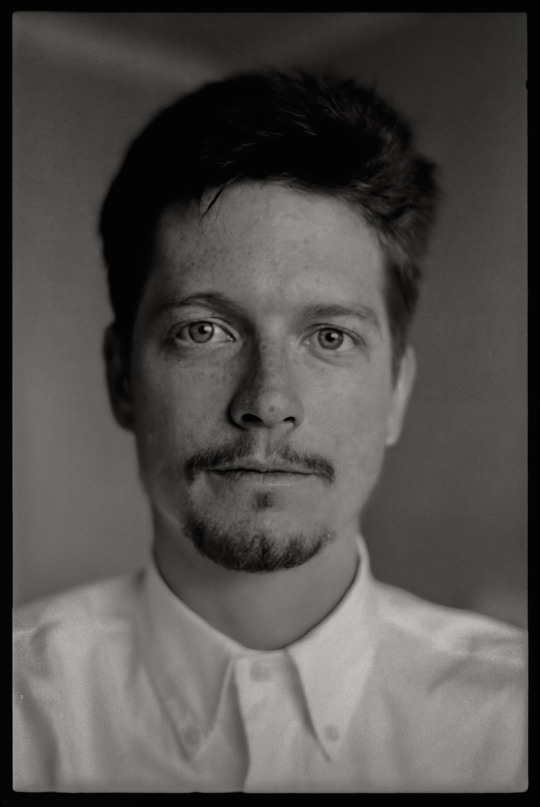



Nearly forty years after I took these photos of Eric Stoltz, I'm forced to admit that this was actually a pretty successful shoot, though I don't remember thinking it was at the time. There's certainly a range of poses and expressions, and one good straight portrait in a simple style that I would have tried to achieve if I shot it today. I can't tell you who I might have shot these for, or who sponsored my accreditation at the 1988 Toronto film festival - a very busy one, judging by the negatives in my files. What I know is that this is the first time most of these shots have been published anywhere - a record of my work just when my apprenticeship had ended and I was obliged to really compete as a professional photographer, just three years after I bought my first camera. Though who I was competing with is an unclear to me now as it was then.


#portrait#portrait photography#black and white#photography#film photography#some old pictures i took#eric stoltz#actor#1988#toronto international film festival#kodak tri x 400#early work#pentax spotmatic
5 notes
·
View notes
Text
Helena Harland, who runs World of Demri instagram account, has a blog at substack where she is publishing interviews she does to people who knew Demri. I asked for permission to share this entry about Demri's activism in here and she kindly allowed.
From her substack blog:
"Demri possessed a radical nature alongside immense charisma. She was a nudist, openly bisexual, modeled for several adult magazines like Penthouse and Hustler, and was unabashedly sexually liberated at a time where it was seen as taboo. She did not view other people with a critical eye, but rather embraced those who most would find “off-center”. Demri’s late mother Kathleen recalled a memory of driving 20 year-old Demri home one day when she suddenly started shouting “Mom, stop! Stop!” Kathleen stopped the car and Demri jumped out to her friend who had green skin, pointed ears, and pointed elf shoes. Demri said, “This is my friend, he’s an elf. Can we give him a ride?” Kathleen, who likely passed on to Demri her attribute of non-judgment and acceptance, gave the elf a ride as he and Demri squeaked and chirped at each other in their own elf language.
Demri’s uniqueness has always intrigued me, and I often wonder what her moral and political beliefs were, as well as what she would think of today’s political issues. The 90s were marked with many social justice issues like LGBT rights— specifically the AIDS crisis. I asked Amber Ferrano, a close friend of Demri’s what she thought about the AIDS epidemic at the time, and it can be beautifully summed up by this memory:
“Demri was bi. She loved everyone and judged no one. We went to shows in gay clubs and they were awesome. I loved that they handed out free condoms even for our crowd. AIDS was horrible at the time. I remember a few times when guys in full drag (with gloves on, mind you) put their hand out to shake and pulled back saying they had AIDS, but Demri went in for a kiss and a hug. People would make negative comments saying she had AIDS or hepatitis from drugs. She didn't understand why people were so mean. If she were here today she'd be on the frontline along with Layne.”
Demri was also visited in the hospital by the Sisters of Perpetual Indulgence, a subversive LGBT activism group that satirized traditional standards and gender roles by combining drag and religious imagery to their street performances. Kathleen said that they adored Demri, and the nurses would gawk at them on their way in.
To seek some more insight on Demri’s activism history, I reached out to Vivian McPeak, the founder of the Seattle activism group called the Peace Heathens, of which Demri was a member. The Peace Heathens were known for their annual Seattle Hempfests, and many Alice in Chains fans have likely seen this video of Layne Staley making an appearance at one in 1994. It is one of the few videos we have of Layne during that year, taken shortly after the release of Jar of Flies.
H: myself, V: Vivian
H: I was wondering what the core beliefs of the Peace Heathens are and how the organization was conceived?
V: In 1988 I had this idea to start a street-level volunteer group composed of alternative culture folks to do good things in the name of the alt-culture, community service projects and benefit shows for righteous causes that got little support from the mainstream. I called it the Seattle Peace Heathens. I created this manifesto, and Yossarrian “Rex” Kelley did a logo graphic I put at the top of it. I plastered the paper fliers all over The Ave, at places like the Allegro Cafe, Espresso Roma, and The Last Exit. I started getting lots of calls from people excited about my crazy vision quest, wanting to learn more and get involved. We started having meetings in people’s homes that eventually got too large, and we moved them to Ravenna Park, where we turned them into potluck feeds that started attracting a homeless contingent.
Meetings started attracting as many as 70 people, mostly music culture and street culture folks - hippies, punk rockers, and an eclectic mix of just progressive, activism-type people. The thing that struck me most, though, is I would be approached by some very neat and clean folks who came on really strong, talking about how resourceful they were and how they were going to contribute all these things. I became very excited about these folks and what they might bring to the group. Then there was an entirely different contingent of absolute street people. These folks were often disheveled, unkempt; they might even have a distinct odor about them. At first, I was not sure what to think about these people, and I placed much of my focus on the other group of folks who seemed to have their shit really together.
The core values of the Seattle Peace Heathens were a commitment to service to society and others through volunteerism, basic counter-culture values of peace and love, Left politics such as social and environmental justice, and a commitment to the power of change through art (visual and music).
H: -It was said that Demri Parrott was a member of the Peace Heathens, do you have memories of her attending meetings or the Hempfests?
V: [I was closer with Layne, so I’ll tell the story of us meeting first.] I was at a hard rock club called the Prime Rib Palace in Totem Lakes, Washington and I struck up a conversation with a blonde dude with long hair and silver pants. We hit it off. He learned I was fresh from Hollywood and wanted to know all about the club scene there. He said his name was Layne, and he had a band called Sleze that was being renamed Alice in Chains. He gave me his number. He was the first person I developed a friendship after I moved to Washington State. A few years later, he invited me to his apartment in a big old brick complex above Eastlake. I met his lady Demri, a petite girl with a beautiful smile and sparkling eyes. I didn't know where to buy weed, and they told me I could get my weed from them. I am not really sure if they were dealing weed or if they were just helping me out, but they always had an eighth when I needed to buy one.
Around 1988 Layne had developed a heroin problem, and I had a cocaine one. I would pick Layne up and drive us to TUNA (Tuesday Night N.A.) at the Rendezvous on 2nd in Belltown, where a guy named Will ran the Narcotics Anonymous meetings. It was pretty much the rocker NA for the area. Unlike his rock persona, Layne was a quiet, almost shy person. He was sensitive and kind,in my experience. It was stunning watching the band climb to rock stardom. I loved their music and was impressed with the strength and power of his voice.
Demri was a bubbly, outgoing person. She volunteered for the Peace Heathens and helped at several of the benefit shows we produced at the famed OK Hotel, one of the only venues with all-age shows. She helped put up posters promoting the shows around town, and at the shows, she worked the merch table and helped us load gear in and out, even though she was a very diminutive person. She was sweet and kind and fearless. She resonated with the Peace Heathens's core belief that all of the various cultural sub-genres of the music/youth/alt-culture (punk, metal, hippie, Reggae, etc.) shared a common spirit and was essentially responding to the same mainstream desire for conformity and control. She believed in the benevolent act of helping others, which was central to the Peace Heathen identity.
I hope this provided some insight on the free spirited nature of Demri, and the ways in which she provided to her community and led with love and compassion. Big thanks to Vivian for taking the time to speak with me and tell me of all his cool stories, and to MemoriesOfDemri on instagram who pointed out the Peace Heathens sticker on Demri’s suitcase as well as provided the information regarding the Sisters of Perpetual Indulgence.
Thank you for reading!
-Helena"
***
Thank you very much Helena for allowing us to share this story here!! Go and follow her on instagram or subscibe to her blog!
#Demri Parrott#Demri activist#Seattle Peace Heathens#Sisters of perpetual indulgence#Vivian McPeak#peace heathens#layne staley#1980s demri#model#artist#stylist#aspiring actress#1990s demri#muse#demri lara parrott#demri parrott murphy#Seattle Peace Heathens Community Action Group#World of Demri#instagram#blog#substack#links#follow#like#join#subscribe#memories#quotes#activist#Seattle Hempfest
18 notes
·
View notes
Text

Black Jesus
Clementine Hunter(American, ca. 1886 - 1988)’s Black Jesus is part of a tradition of imagery that dates to the early 19th century when Robert Alexander Young, in The Ethiopian Manifesto (1829), referred to the coming of a black messiah. Since then, artists have re-created the black Jesus in paintings, stained-glass windows, Bibles, and more. Hunter was known for her many depictions of Christ’s crucifixion, although this version stands out because it lacks a cross.
Hunter had no formal art training and only began painting in her fifties. She spent most of her life on the Melrose Plantation in Louisiana, picking cotton and collecting pecans. Later she worked inside, cleaning houses and washing clothes. Once she did begin painting, she was quite prolific. It is believed that she produced several thousand works.
Description
This oil painting depicts a human figure with arms extended horizontally. The figure wears a long loose dark red/brown robe that flares outward towards the hem. The figure's head, an oval with two white spots for eyes as the only defined features, has short lines radiating outward from the scalp. There are two small round red spots over the figure's chest. At the ends of each horizontal arm is a larger oblong of paint. Each oblong has a streak of red trickling from the center. At the bottom of the figure are two short triangular brush strokes. Each triangular shape has a red streak running through the middle. To the right of the figure are two short vertical lines crossed by three horizontal short lines. They are done in a dark reddish-brown color. Pencil lines are visible underneath the brush strokes. There is a dark grey blue line of color across the top of the painting, and a green line across the bottom."
- source
5 notes
·
View notes